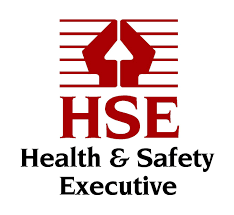Earlier this month, the Health and Safety Executive (HSE), published its annual statistics setting out the number of work-related fatal injuries in the year to March 2023.
135 workers were killed in work-related incidents in Great Britain in 2022/23, an increase of 12 (10%) on the previous year, AND a total of 68 members of the public sustained fatal injuries, which is a decrease of 20 deaths (23%) from the same period last year.

Trends
In analysing the trends of fatal injuries to workers, it is clear that this year’s figures are similar to those last seen prior to the Covid 19 pandemic, and are equivalent to data from 2016/17 where there was the same number of work-related deaths, but fewer than the year 2018/19, where there were 149 worker fatalities.
Which industries are the most common fatalities occurring in?
82% of fatal injuries in 2022/23 occurred within five industry sectors:
Construction: consistent with previous years, the construction sector had the highest number of fatalities, with a total of 45 fatal injuries recorded, an increase of 16 (55%) from the previous year. The five-year average for fatalities in this sector is 37.
Agriculture, Forestry and Fishing: this sector saw 21 fatal injuries, a decrease of 2 (9%) from the previous year.
Manufacturing: the manufacturing sector had 15 fatal injuries, which is also a decrease of 7 (32%) from the previous year.
Transportation and Storage: the number of work-place fatalities fell by 1 from the previous year of 16.
Wholesale, Retail, Motor Repair, Accommodation and Food Services: the number of work-place related deaths increased to 15 (36%), from the 11 that were recorded in the previous year.
HSE have also considered the fatal injury rate by looking at the number of fatalities per 100,000 workers employed. The calculation shows that the agriculture, forestry and fishing sector appears to be the least safe and poses the greatest risk of serious injury across all the sectors, with waste and recycling in second place.
Which are the most common types of incidents?
The statistics show that falls from height and being struck by a moving vehicle or object remain the main causes of fatal injury. Combined, they have accounted for more than half of all fatalities every year since 2001/02. In the year to March 2023:
40 of the fatal injuries recorded were attributable to falls from height, accounting for 30% of all work-related deaths in this period, reflecting the significant risks posed by working at height.
Being struck by a moving, flying or falling object made up 21% of the fatal injuries sustained.
Being struck by a moving vehicle accounted for 20 fatal injuries to workers, representing 15% of the total number of deaths in 2022/23.
Conclusion
Whilst there has been a long term declining trend in the number of fatal incidents in the workplace over recent years, both to workers and members of the public, it is clear that certain sectors and workplace activities continue to pose significant risk.
Falling from height and being struck by an object or moving vehicle, remain the most high risk workplace activities. Based on these statistics, employers need to ensure that these work activities are suitably and sufficiently risk assessed, and that robust control measures are put in place to mitigate those risks.
The statistics also show that the rate of fatal injury is higher to older workers and reinforces the need for businesses to ensure that they have suitable training programmes with refresher training, and toolbox talks, being delivered to employees on a regular basis.
Any loss of life in the workplace is a tragedy. While these figures show Great Britain is one of the safest countries in the world to work, safety must continue to be at the top of everyone’s agenda. Our mission is to protect people and places and we remain committed to maintaining safe workplaces and holding employers to account for their actions.
